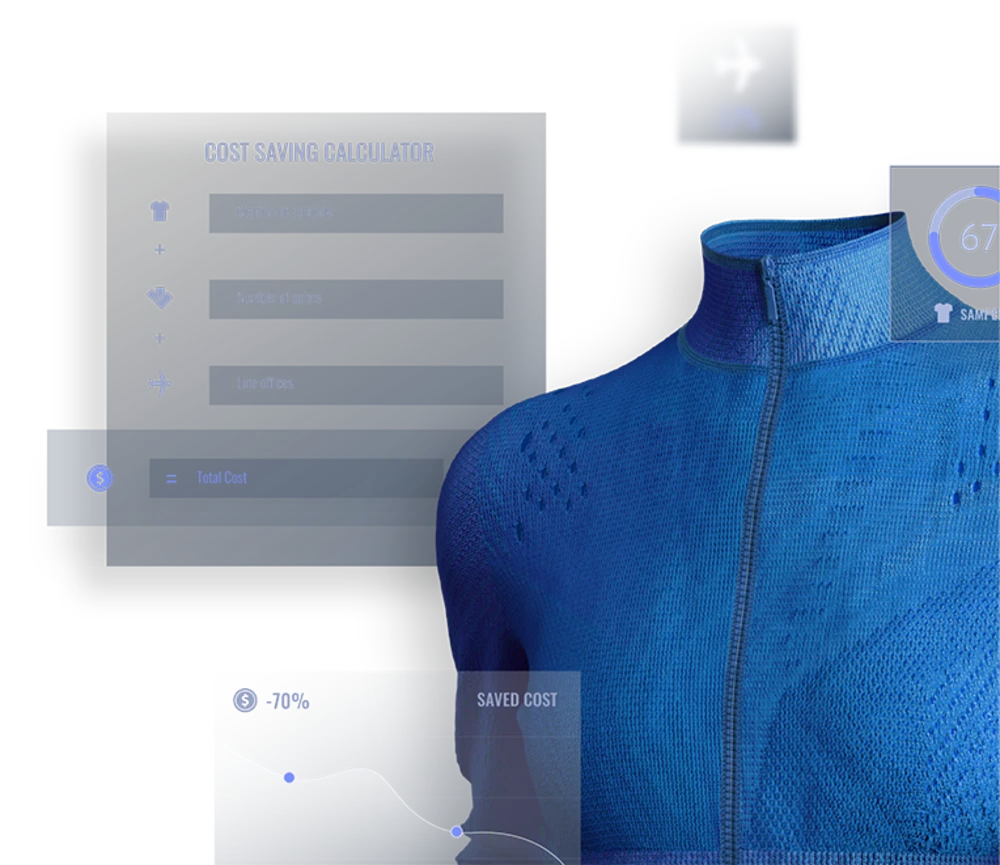How VR and AR Are Transforming the Fashion Industry
Discover how augmented reality (AR) and virtual reality (VR) are transforming the fashion industry, from virtual try-ons to immersive shopping...
October 14, 2024

The fashion tech movement is fundamentally changing and improving how fashion is produced and consumed today. As digital technologies continue to advance, it is important to keep up with these growing trends to stay relevant within a competitive and ever-evolving market.
Fashion technology refers to the innovative use of advanced tools, software, and systems to transform and enhance various aspects of the fashion industry. It bridges the gap between fashion design, manufacturing, and consumer experience by integrating technology to improve efficiency, sustainability, and creativity.
Robot sewing machines that cut and sew fabric, Artificial Intelligence (AI) algorithms that can predict style trends for the coming seasons and an entirely new virtual world where designers have complete creative freedom are all examples of innovative technologies that are currently influencing how we make the clothes we wear every day.
We’ve highlighted the top tech trends impacting the fashion industry today. You will notice that all of these trends are targeted at tackling overstock and high return rates, which have been ongoing challenges for the fashion industry.
Virtual twins are emerging as a transformative trend in fashion technology, taking the concept of digital twins to the next level. While a digital twin serves as a static, accurate digital replica of a physical garment, a virtual twin goes beyond by enabling real-time simulation, interaction, and analysis throughout the product lifecycle.
Virtual twins not only mirror the visual and structural details of a garment but also simulate how it behaves in various conditions, such as movement, draping, and material changes. This advanced capability allows designers, merchandisers, and manufacturers to visualize, test, and perfect designs before a single physical prototype is created, leading to reduced production time, reduced waste, and greater accuracy in achieving fit and aesthetics.
By integrating virtual twins into product development, fashion brands are streamlining processes, enhancing sustainability, and unlocking new levels of creativity and precision in digital product creation. Browzwear's virtual twins offer real-time fit and fabric simulations, facilitating faster review processes and better decision-making.

With the help of automation and AI, fashion teams can speed up the workflows, reduce manual workloads, and enable data-driven decision-making. With Browzwear's automation tools, fashion brands, for example, can create multiple colorways quickly, freeing more time for other tasks. The process traditionally takes multiple hours and even days.
By integrating AI-powered tools into its solutions, fashion brands can create a streamlined and efficient digital workflow. For instance, AI can predict future fashion trends, recommend design adjustments, or improve fit accuracy by analyzing body data and garment performance. Additionally, AI integrations enable faster iteration cycles, allowing teams to experiment with designs at scale while reducing reliance on physical samples.

As technology has continued to disrupt the apparel industry, apparel organizations can now jump on the trends and adopt 3D fashion design software like VStitcher, as over-production has been a recurring obstacle the apparel industry faces.
Designers are now taking on a fully digital workflow and can create digital samples showcasing continuous variations from seams, pockets, and layers to fabric properties and material visualization. This helps organizations produce on-trend and accurate garments on demand on a made-to-order basis instead of creating an entire collection that will eventually become outdated.

Using advanced scanners and AI algorithms, this technology captures accurate body data in seconds, ensuring garments are tailored to each individual’s unique shape and size. By eliminating the guesswork in sizing, body scanning significantly improves fit accuracy, leading to higher customer satisfaction and a drastic reduction in product returns.
For brands and manufacturers, this innovation streamlines production processes, minimizes material waste, and enhances operational efficiency, making it a win-win solution for both businesses and consumers. As personalization becomes increasingly central to the shopping experience, body scanning technology is paving the way for a future where perfect fit is the new standard.
Discover how augmented reality (AR) and virtual reality (VR) are transforming the fashion industry, from virtual try-ons to immersive shopping...
Explore Tracy and Starry’s Browzwear Hong Kong internship, featuring training, fabric testing, and contributions to 3D fashion innovation.
Explore how Digital Product Creation (DPC) transforms fashion with 3D design tools, reducing waste, cutting costs, and boosting creativity.